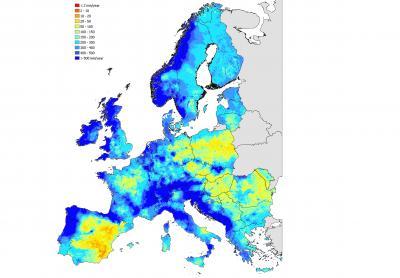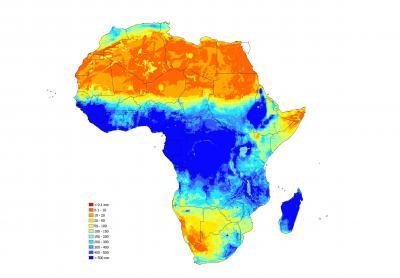A new assessment of available water resources, published today by the Joint Research Centre (JRC), reveals that large areas in Spain and Eastern Europe have on average less than 200 mm freshwater available every year while the demand for water is three to ten times higher. The report 'Current Water Resources in Europe and Africa' shows variations in yearly freshwater generation from 10 mm to over 500 mm for Europe and from less than 0.1 mm to over 500 mm for Africa. The report outlines existing uncertainties and points to further research efforts needed for improved water management. Its publication coincides with the 6th World Water Forum taking place in Marseille, France, from 12 to 17 March 2012.
Ensuring that water is available in sufficient quantities for all legitimate uses is a major policy challenge. The JRC carries out research to assess current and future water availability versus current and future water demands from different economic sectors. It analyses available water resources, floods, droughts and water scarcity using hydrological simulation modelling. Improved water management and forecasts of water scarcity are however complex issues and this JRC analysis of the water resources for Africa and Europe provides a solid foundation on which to address future challenges.
In Europe, most data needed for water resources assessment are already available but access to them still needs to be improved to achieve a pan-European overview. In particular the public availability of river flow observations needs to be addressed.

This is a map showing the yearly new freshwater availability for Europe (average for the years 1990-2010).
(Photo Credit: Joint Research Centre)
For the African continent the latest assessment of water resources reveals large areas with less than 200 mm freshwater generation per year. Higher values are measured only in parts of Equatorial Africa, Southwest Ethiopia, Eastern South-Africa and Madagascar. Water scarcity is particularly difficult to estimate since the most recent pan-African data on water use date back to the year 2000. In addition, and just as for Europe, information on inter river basin water transfers is often unavailable.
The lack of available observed river flow data for Africa, for example, creates a major bottleneck in calibrating and verifying hydrological models for this continent. The availability of meteorological observations acquired by satellite has, however, greatly improved for Africa.

This is a map showing the yearly new freshwater availability for Africa (years 1989-2010).
(Photo Credit: Joint Research Centre)